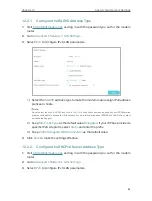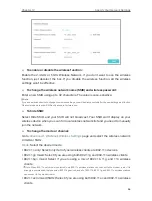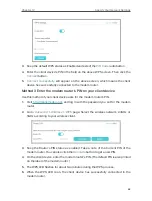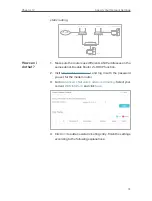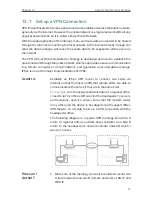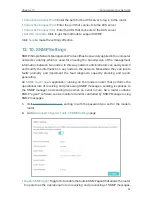
77
Chapter 12
Specify Your Network Settings
12 7 Set up a
VPN Connection
VPN (Virtual Private Network) is a private network established across the public network,
generally via the internet. However, the private network is a logical network without any
physical network lines, so it is called Virtual Private Network.
With the wide application of the internet, more and more data are needed to be shared
through the internet. Connecting the local network to the internet directly, though can
allow the data exchange, will cause the private data to be exposed to all the users on
the internet.
The VPN (Virtual Private Network) technology is developed and used to establish the
private network through the public network, which can provides a secure communication
to a remote computer or remote network, and guarantee a secured data exchange.
IPSec is one of the major implementations of VPNs.
Establish an IPSec VPN tunnel to connect two LANs via
internet so that the hosts in different remote LANs are able to
communicate with each as if they are in the same LAN.
For example
, I am the network administrator of a regional office.
I need to let my office staff can visit the headquarter’s servers
and resources, and vice versa. I know that the modem router
in my office and the device in headquarter both support IPSec
VPN feature, so I decide to set up a VPN connection with the
headquarter office.
The following diagram is a typical VPN topology. Here Site A
refers to regional office’s network (local network). And Site B
refers to the headquarter’s network (remote network) which I
want to connect.
Modem router 1
LAN: 192.168.1.1
WAN: 219.134.112.246
PC 1
Subnetmask: 255.255.255.0
WAN: 219.134.112.247
Modem Router 2
PC 2
LAN: 192.168.2.1
Subnetmask: 255.255.255.0
Site A
Site B
1
Make sure of the topology you want to build and record site
A (local network) and site B (remote network)’s LAN IP and
WAN IP.
I want to:
How can I
do that?


